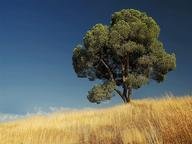Quiz Answer Key and Fun Facts
1. In 1776, John Adams wrote to his wife Abigail that the fourth day of July, 1776 "... will be the most memorable epoch in the history of America. I am apt to believe that it will be celebrated by succeeding generations as the great anniversary festival. It ought to be commemorated as the day of deliverance, by solemn acts of devotion to God Almighty. It ought to be solemnized with pomp and parade, with shows, games, sports, guns, bells, bonfires and illuminations, from one end of the continent to the other, from this time forward, forevermore."
2. On the fourth of July, 1826, these two former U.S. presidents died within a few hours of each other; who were they?
3. On the fourth of July, 1826, the same date which saw the deaths of two U.S. presidents, this noted American was born. Who was he?
4. Which of these patriotic songs was first performed on the fourth of July, 1832, at the Park Street Church in Boston?
5. On July 4, 1848, President James Knox Polk laid the cornerstone of a famous structure. Which?
6. Which of these pivotal events in the history of U.S. slavery and abolition was originally planned to have taken place on Independence Day?
7. Only one U.S. president was actually born on the fourth of July; who was he?
8. This celebrated American popular composer, some of whose songs are an integral part of most Independence Day celebrations, adamantly claimed to have been born on the 4th. His baptismal records, however, indicated that he was one day shy of the fourth, having been born on July 3rd. Who was he?
9. The current U.S. flag featuring fifty stars was adopted on July 4, 1960, following the admission of this state into the union. Which state was it?
10. Which of these famous sets of twins were born on July 4?
Source: Author
jouen58
This quiz was reviewed by FunTrivia editor
bloomsby before going online.
Any errors found in FunTrivia content are routinely corrected through our feedback system.

